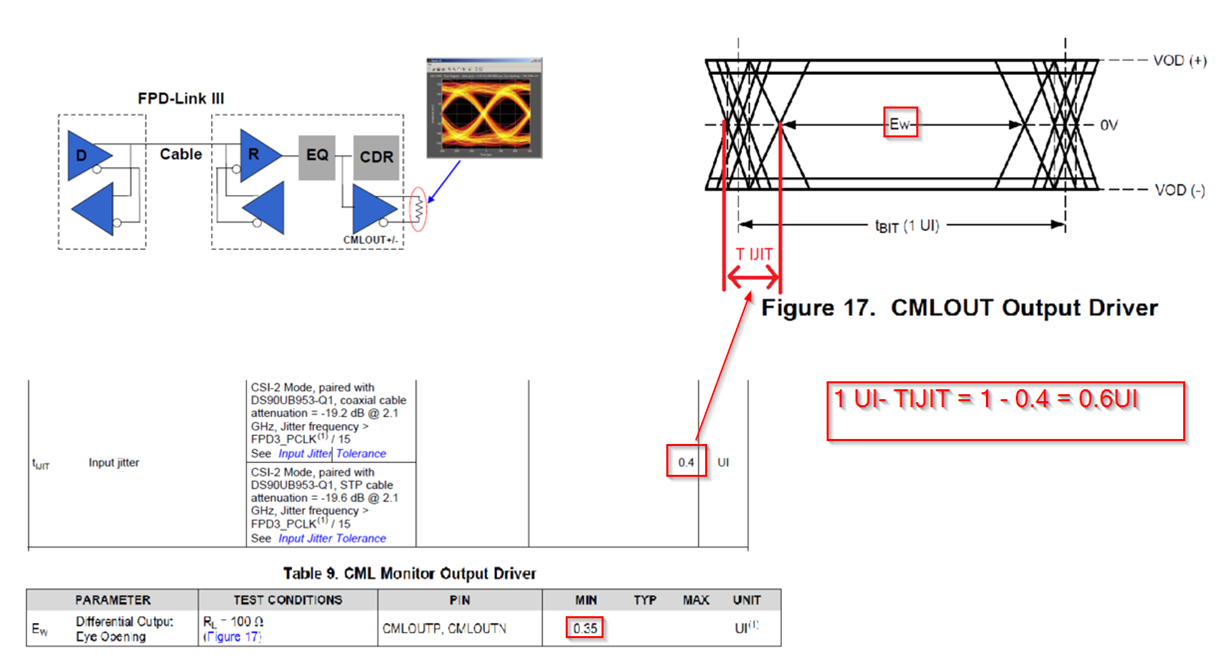Hi TI Support Team
I want to know which parameter used verify 960 FPDLINK forward channel performance.
From datasheet description, the CML out can used to monitor the total jitters so the min eye width is 0.35UI,that means it allow the max jitter is 1-0.35=0.65 UI.
but the input jitter requirement from datasheet: max 0.4 UI for CDR and PLL of the receiver to track and recover the incoming serial data stream.
Do you means the 1 - 0.4UI (total jitter) =0.6 UI for clean eye diagram. But the mini eye width is 0.35 UI. So we have 0.25UI margin. Is it correct?
CML output requirement:
(1). CMLOUT supplies a buffered loop-through output driver to observe the jitter after equalization.
(2). CMLOUT monitors the post EQ stage, thus providing the recovered input of the deserializer signal.
(3). The measured serial data width on the CMLOUT loop-through is the total jitter including the internal driver, AEQ, back channel echo, and so forth.
(4). CMLOUT eye opening of at least 0.35 UI suggests that the forward channel signal integrity is likely acceptable.
Input jitter requirement:
(1) Chapter 6.6 AC EC : tiJIT = 0.4UI max
Thanks
Yutai




